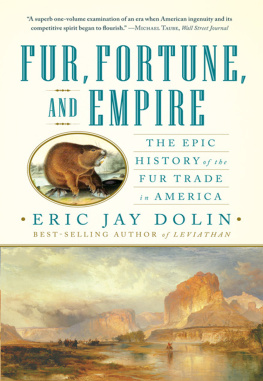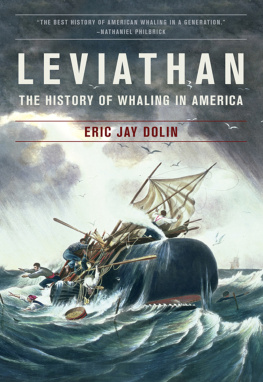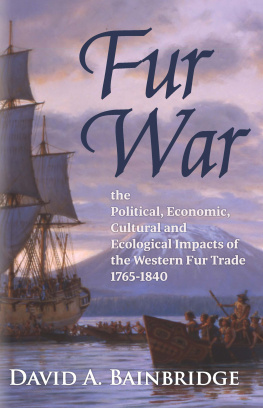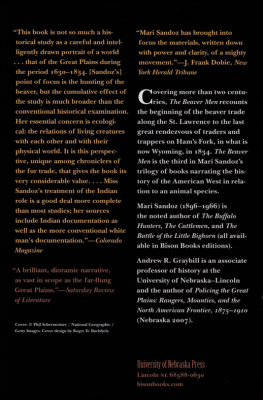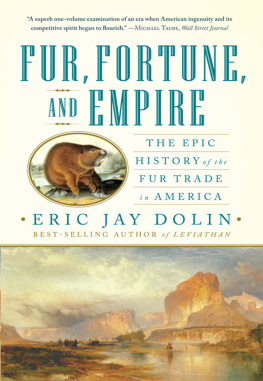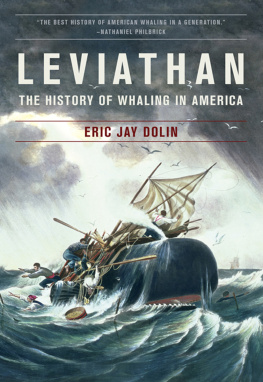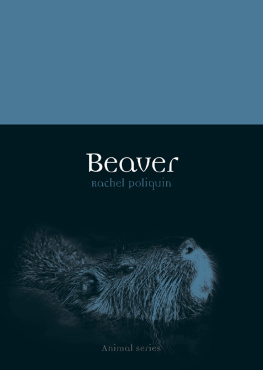OTHER BOOKS BY ERIC JAY DOLIN
Leviathan: The History of Whaling in America
Political Waters
Snakehead: A Fish Out of Water
Smithsonian Book of National Wildlife Refuges

Eric Jay Dolin
F UR , F ORTUNE , and E MPIRE
The Epic History of the Fur Trade in America
W. W. NORTON & COMPANY New York London
Frontispiece: Fur Traders Descending the Missouri , by George Caleb Bingham, 1845
Copyright 2010 by Eric Jay Dolin
All rights reserved
Map 2010 by David Cain
For information about permission to reproduce selections from this book,
write to Permissions, W. W. Norton & Company, Inc.,
500 Fifth Avenue, New York, NY 10110
Library of Congress Cataloging-in-Publication Data
Dolin, Eric Jay.
Fur, fortune, and empire: the epic history of the fur trade in America / Eric Jay Dolin.
p. cm.
Includes bibliographical references.
ISBN: 978-0-393-07924-1
1. Fur tradeNorth AmericaHistory. 2. Fur tradeWest (U.S.)History.
3. Frontier and pioneer lifeNorth America. 4. EuropeansNorth AmericaHistory.
5. ImperialismHistory. 6. EuropeColoniesAmerica. 7. North AmericaHistory.
8. North AmericaEthnic relations. 9. North AmericaDiscovery and explorationEuropean.
10. North AmericaEconomic conditions. I. Title.
E46.D65 2010
381'.456850973dc22
2010016212
W. W. Norton & Company, Inc.
500 Fifth Avenue, New York, N.Y. 10110
www.wwnorton.com
W. W. Norton & Company Ltd.
Castle House, 75/76 Wells Street, London W1T 3QT
To Jennifer
THE HISTORY OF NORTH AMERICAN EXPANSION MIGHT almost be written in terms of the fur trade. Europeans were early attracted to the North American coast by the hope of reaping profits from this trade, and after the beginning of settlement revenue from it was the principal means of sustenance to the early English, French, and Dutch colonies. Many a nameless trader, intent only upon his trade and caring nothing for the name of discoverer, has been the first white man to set foot upon lands credit for the discovery of which has gone to others. Before him was the wilderness; behind him, over paths he himself had made, poured in an ever advancing tide of settlement. Thus the fur trader has blazed the way across the continent.
ARTHUR H. BUFFINTON, paper presented to the Colonial Society of Massachusetts by Samuel Eliot Morison, January 1916
INTRODUCTION

British fur trading scene, eastern North America, from 1777.
T HE BIBLE AND THE BEAVER WERE THE TWO MAINSTAYS OF the Plymouth Colony in its early years. So wrote historian James Truslow Adams in 1921.1 Given that the Pilgrims were Puritan separatists who went to America to escape religious persecution, I understood Adamss reference to the Bible. It was central to the Pilgrims way of life, and its teachings helped them maintain purpose and hope in the face of extremely trying circumstances. But I had no idea why he had thrown beavers into the mix. Intrigued, I read more, and soon the reference to beavers made sense. For more than a decade after their arrival in America, the Pilgrims main source of income for purchasing supplies and paying off their debts had come from the sale of beaver pelts shipped to Londonpelts they obtained by trading with the Indians.2 Thus the beaver was critical to the colonys survival. This discovery was a surprise to me. What else didnt I know about the American fur trade? The answer was quite a lot.
The fur trade was a powerful force in shaping the course of American history from the early 1600s through the late 1800s, playing a major role in the settlement and evolution of the colonies, and in the growth of the United States. Millions of animals were killed for their pelts, which were used according to the dictates of fashionand human vanity. This relentless pursuit of furs left in its wake a dramatic, often tragic tale of clashing cultures, fluctuating fortunes, and bloody wars.
In time the fur trade determined the course of empire. It spurred the colonization of eastern North America, and the fierce competition to control the regions fur trade pitted European nations against one another, transforming the New World into a battleground and ultimately leading to the expulsion of the Swedes, Dutch, and French from the continent. Disputes over the fur trade were also a factor in causing the American Revolution and the War of 1812, and as the trade spread to the shores of the Pacific, it became a critical force in expanding the United States and establishing its boundaries, especially in the Northwest.
Fur traders and trappers were typically the first white men the Indians had ever seen, and the dynamics of the fur trade dramatically influenced their culture, often for the worse. No less affected was a whole host of North American species, as the trade swept like a lethal wave over the land. Although the traffic in furs never caused the extinction of a species, in a few cases it came mighty close.
Much more than a recounting of economic, military, cultural, and ecological influences, however, the story of the American fur trade boasts a cast beyond the scope of a Hollywood epic (in a sense The Good, the Bad, and the Ugly might be an appropriate title)at once the honest and the twisted, hedonists and visionaries, Founding Fathers and prodigal sons. And perhaps the most memorable characters of all are the animals that made the fur trade possible, especially the beaver, the sea otter, and the buffalo.
Thousands of books and articles have been written on the American fur trade. In 1902, in his classic 1,029-page The American Fur Trade of the Far West , Hiram Martin Chittenden warned his readers, In fixing upon a logical order of presenting the subject much embarrassment has been experienced on account of the heterogeneous character of the material to be dealt with. The events have been so diverse, and have borne so little relation to each other, that the task of making a connected narrative has been well-nigh impossible.3 Whereas Chittenden focused almost exclusively on the Western fur trade in the nineteenth century, the scope of this book is much broader. Nevertheless I found there to be a clear and compelling narrative. I also discovered that the narrative had a logical ending, for the conservation movement that emerged in the late 1800s and early 1900s coincided with the widespread implementation of laws regulating the killing of fur-bearing animals. This book, therefore, does not address the American fur trade as it evolved during the twentieth and twenty-first centuries, nor does it cover the current highly charged political and ethical debate over animal rights and the propriety ormany would saythe impropriety of wearing fur. What it does offer is the extraordinary story of the fur trade of old, when the rallying cry was, Get the furs while they last.

